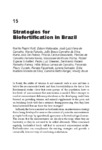Por favor, use este identificador para citar o enlazar este ítem:
http://www.alice.cnptia.embrapa.br/alice/handle/doc/865202Registro completo de metadatos
| Campo DC | Valor | Lengua/Idioma |
|---|---|---|
| dc.contributor.author | NUTTI, M. R. | pt_BR |
| dc.contributor.author | WATANABE, E. | pt_BR |
| dc.contributor.author | CARVALHO, J. L. V. de | pt_BR |
| dc.contributor.author | FUKUDA, W. | pt_BR |
| dc.contributor.author | SILVA, J. B. C. da | pt_BR |
| dc.contributor.author | DEL PELOSO, M. J. | pt_BR |
| dc.contributor.author | BASSINELLO, P. Z. | pt_BR |
| dc.contributor.author | NEVES, P. de C. F. | pt_BR |
| dc.contributor.author | ROCHA, M. de M. | pt_BR |
| dc.contributor.author | SCHAFFERT, R. E. | pt_BR |
| dc.contributor.author | SHEEREN, P. L. | pt_BR |
| dc.contributor.author | RAMOS, S. R. R. | pt_BR |
| dc.contributor.author | CARVALHO, H. W. L. de | pt_BR |
| dc.contributor.author | CURADO, F. F. | pt_BR |
| dc.contributor.author | FIGUEIREDO, R. | pt_BR |
| dc.contributor.author | SALVADOR, L. | pt_BR |
| dc.contributor.author | SILVA, E. M. M. da | pt_BR |
| dc.contributor.author | RANGEL, C. N. | pt_BR |
| dc.contributor.author | BOUIS, H. | pt_BR |
| dc.date.accessioned | 2011-04-10T11:11:11Z | pt_BR |
| dc.date.available | 2011-04-10T11:11:11Z | pt_BR |
| dc.date.created | 2010-10-26 | pt_BR |
| dc.date.issued | 2010 | pt_BR |
| dc.identifier.citation | In: SERAGELDIN, I.; MASSOD, E.; EL-FAHAM, M.; EL-WAKIL, M. (Ed.). From promises to practice: applications of science and technology in food, healthcare, energy and environment: BioVision Alexandria 2008. Alexandria: Bibliotheca Alexandrina, c2010. 1 CD-ROM. cap. 15, p. 177-193. | pt_BR |
| dc.identifier.uri | http://www.alice.cnptia.embrapa.br/alice/handle/doc/865202 | pt_BR |
| dc.description | In Brazil, the intake of vitamin A and minerals such as iron and zinc is below the recommended levels and their bioavailability in the diet is low. Biochemical studies show that some groups of the population have so low levels of micronutrient that intervention is needed. Most attempts to combat micronutrient deficiency elsewhere in the developing world have focused on providing vitamin and mineral supplements to the poor and on fortifying foods with these nutrients during processing after they have been harvested. But are these the best strategies? In Brazil, the focus is instead on biofortification, an intervention strategy that is being developed to increase the content of particular micronutrients in staple food crops by agricultural, agronomic or biotechnological means. This means that the micronutrients are already in the crops when they are harvested, so they do not need to be added afterwards. When consumed regularly, biofortified foods will lead to increased micronutrient intake. Biofortification can complement the existing strategies and provide a sustainable, low-cost way of combating malnutrition. | eng |
| dc.language.iso | eng | eng |
| dc.rights | openAccess | eng |
| dc.subject | Biofortificação | pt_BR |
| dc.subject | Brasil | pt_BR |
| dc.title | Strategies for biofortification in Brazil. | pt_BR |
| dc.type | Parte de livro | pt_BR |
| dc.date.updated | 2017-05-29T11:11:11Z | pt_BR |
| riaa.ainfo.id | 865202 | pt_BR |
| riaa.ainfo.lastupdate | 2017-05-29 | pt_BR |
| dc.contributor.institution | MARILIA REGINI NUTTI, CTAA; EDSON WATANABE, CTAA; JOSE LUIZ VIANA DE CARVALHO, CTAA; WANIA MARIA GONÇALVES FUKUDA, CNPMF; JOÃO BOSCO CARVALHO DA SILVA, CNPH; MARIA JOSE DEL PELOSO, CNPAF; PRISCILA ZACZUK BASSINELLO, CNPAF; PERICLES DE CARVALHO FERREIRA NEVES, CNPAF; MAURISRAEL DE MOURA ROCHA, CPAMN; ROBERT EUGENE SCHAFFERT, CNPMS; PEDRO LUIZ SHEEREN; SEMIRAMIS RABELO RAMALHO RAMOS, CPATC; HELIO WILSON LEMOS DE CARVALHO, CPATC; FERNANDO FLEURY CURADO, CPATC; RENATA FIGUEIREDO; LORENA SALVADOR; ERIKA MADEIRA MOREIRA DA SILVA; CAROLINA NETTO RANGEL; HOWDY BOUIS. | pt_BR |
| Aparece en las colecciones: | Capítulo em livro científico (CTAA)  | |
Ficheros en este ítem:
| Fichero | Descripción | Tamaño | Formato | |
|---|---|---|---|---|
| 2010002.pdf | 329.8 kB | Adobe PDF |  Visualizar/Abrir |









